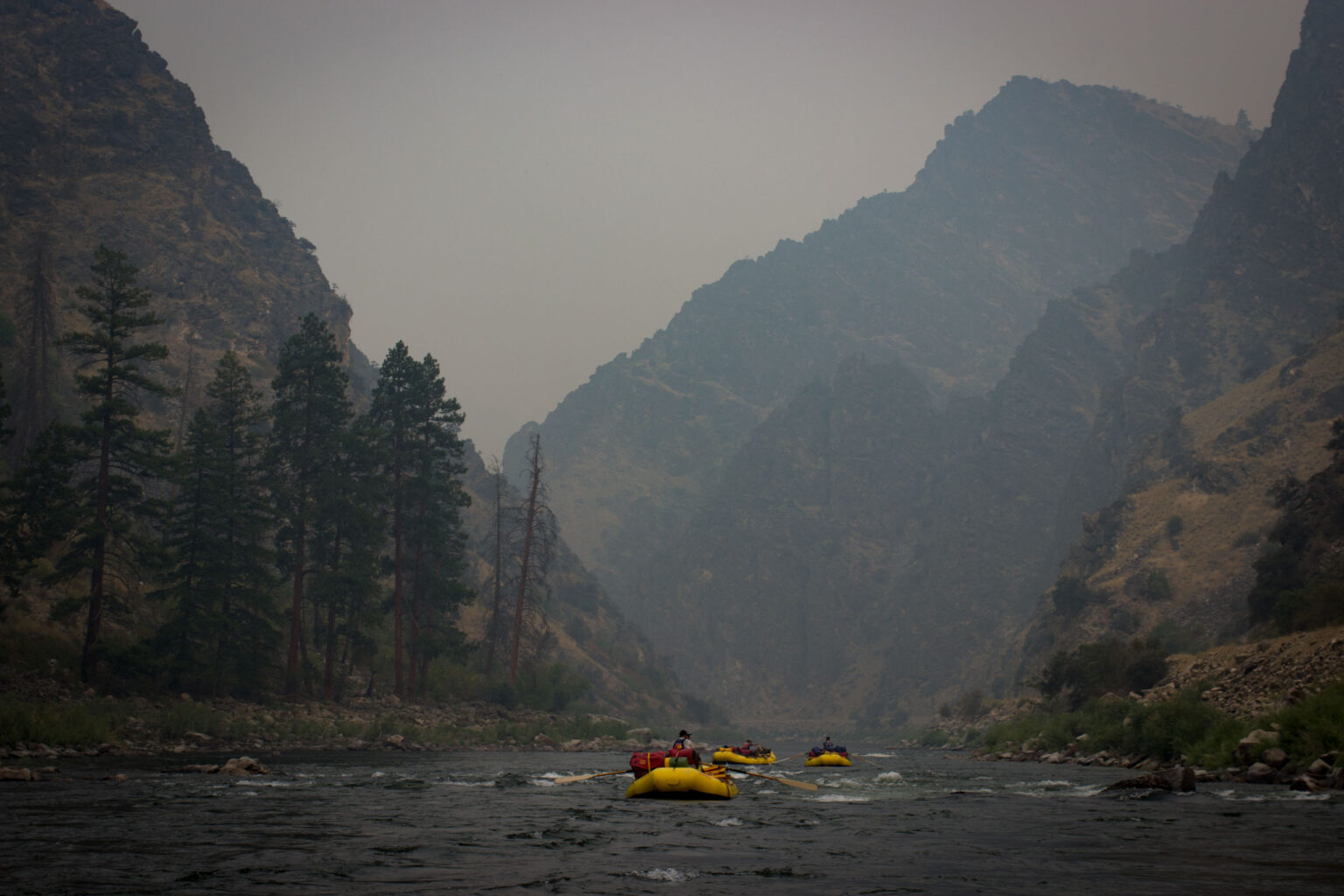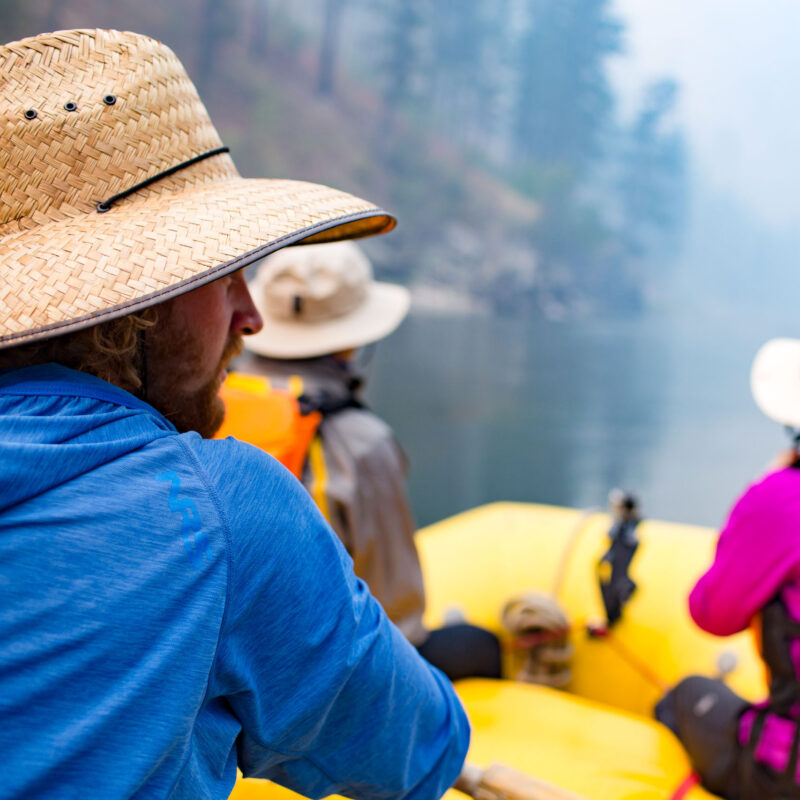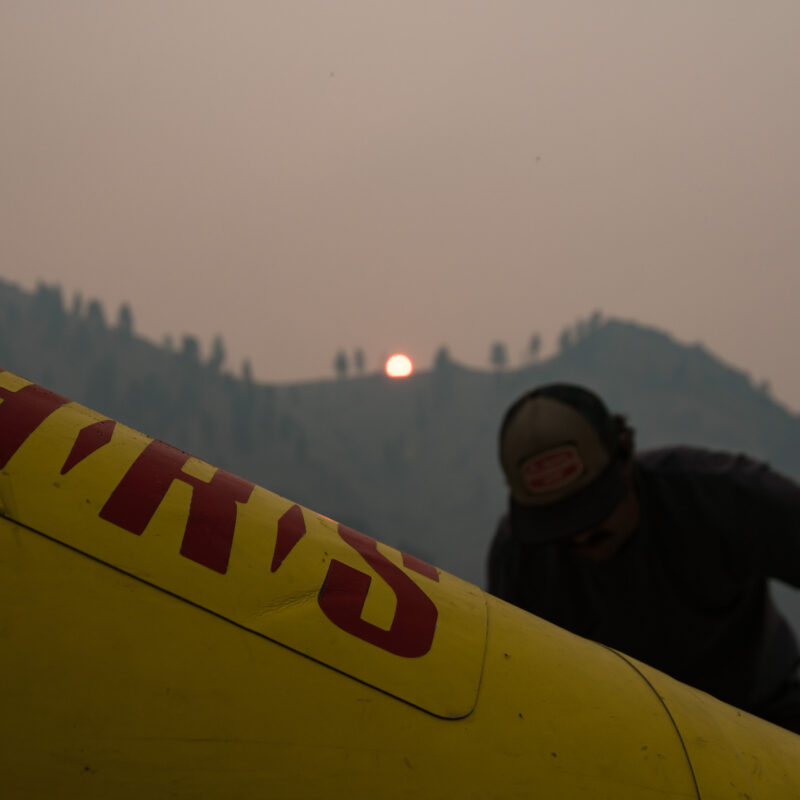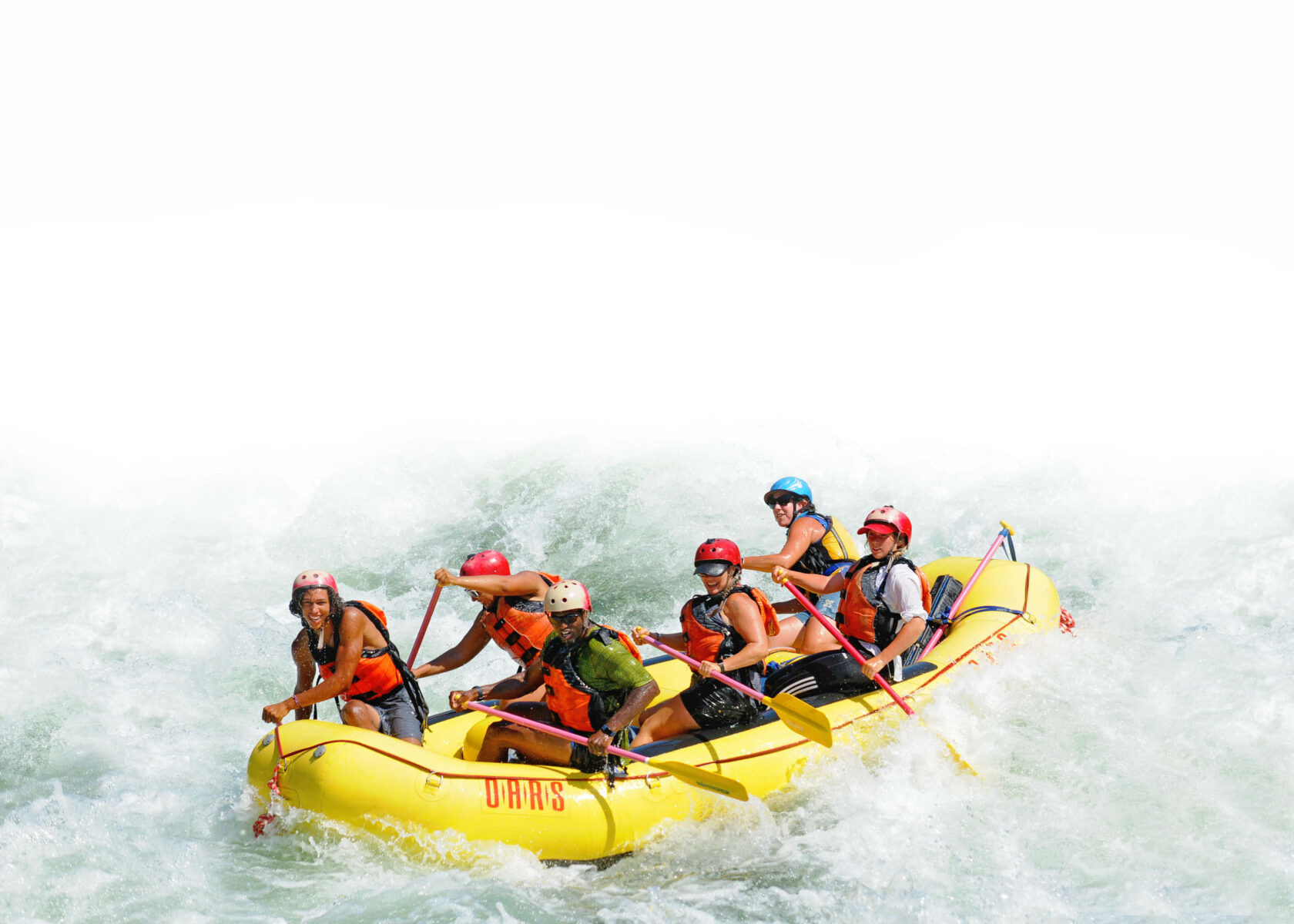
Rafting During Wildfire Season
Wildfire and Smoke
Fire activity frequently impacts the air quality on our trips, and occasionally wildfires may be present in the immediate vicinity of where we’re traveling. Smoke impacts are more likely in the latter-half of the summer season, so those with asthma or other respiratory conditions may wish to steer clear of this time frame. In general, we will not cancel a trip on account of smoky conditions, except in cases of clear danger to life or property. Necessary changes to logistics and/or destination may occur with very short notice as fire conditions are constantly changing. We will do our best to keep you apprised of excessively smoky conditions that can be foreseen for your upcoming trip, but we also encourage you to stay informed about local fire activity (see below).
Those with asthma or other health conditions affected by air quality should consider this when booking a trip during “fire season.” Our standard cancellation terms & conditions apply should you choose to cancel due to environmental conditions resulting from a wildfire near to where our trip operates. Please review the specific Terms & Conditions for your trip, which can be found at the bottom of the “Before You Go” page for your tip. Furthermore, we recommend you consider investing in a comprehensive Travel Protection Plan that provides you the ability to “cancel for any reason” should you feel conditions from a nearby wildfire may result in you canceling your reservation.

How can I Stay Informed?
The best place to learn about the conditions on the river is from OARS. We are in regular contact with the managing agencies and frequently have guides coming off the water who can report on-the-ground conditions and smoke impacts.
Additional Information
Additional information can be found at a number of fire-related websites. If a fire could or is affecting our river trip operations, we will link to the appropriate pages on this site in real time.
- InciWeb is a great resource once a fire reaches a certain size and has a name. You can track information specific to that fire on a dedicated page; If such a page is created for a fire.
- Airnow is a resource to check the air quality in the general location of the fire. Understand that all sensors for these types of sites are in populated areas which typically are above the river canyon. This may cause air quality to register worse than in the canyon itself. It is a good idea to check along the river canyon in multiple locations if you can, as well as the takeout destination. It is possible that the early part of your trip will be the most affected with conditions improving as the trip goes on.
- Many agencies also have their own incident command pages (Calfire, USFS, and Local Agencies to name a few).
Many fires pass through areas quickly and conditions change hour-to-hour and day-by-day. These sites can give a glimpse into current conditions, but there can also be a two to 12+ hour delay in verified reporting. This is caused by the information making it out of the front lines to the incident command, incident command then first does their job of deploying equipment and personnel to areas in need. After collection of all area data and if multiple agencies are working together, on the same fire, they put together a cumulative report for press release. It can be frustrating not knowing what is happening or feeling they are not sharing enough information to make decisions, but knowing that they are doing it as quickly and safely as possible.
We thank the firefighters and first responders who work to protect our communities while also managing our vast wilderness in times of extreme weather, challenging terrain, and harsh conditions.

Conditions in the Canyon
Various factors play a role in the on-river conditions during a fire, which could include:
- Proximity to the fire
- Wind direction or lack of wind
- Direction of river travel (to or away from the fire)
- Fuel being burned (grasses vs. dense forest or vegetation)
- Fire Management attack by agencies
You could notice in the morning hours that the smoke has “settled” in the canyon, as the heavier smoke has moved down the canyon overnight. As the morning and day progress, warm air starts to rise (pushing up canyon) and the smoke may clear out for the day. These conditions can be light to heavy, depending on the wind direction and the fire, but conditions don’t typically last all day, giving us a chance to enjoy fresh air later in the day.
Items in your packing list can assist you when navigating wildfires on the river. A bandana or other face covering can act as a filter if conditions worsen.
Discover Your Next OARS Adventure
